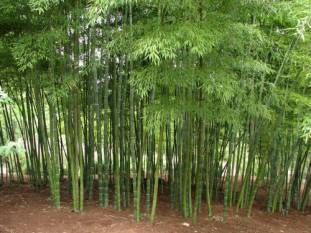GUWAHATI, 26 April 2024: India’s agricultural tapestry is witnessing a sustainable revolution with the rise of bamboo farming. Known as ‘green gold,’ bamboo is not just a plant but a beacon of economic and environmental hope for Indian farmers.
The Lucrative Shift to Bamboo
Farmers across India are turning to bamboo farming, attracted by its low maintenance, high yield, and multifaceted uses. Bamboo’s fast growth rate and adaptability make it a viable crop even in less fertile soils, offering farmers a steady income with minimal investment.
State-Wise Bamboo Cultivation
Bamboo thrives in various Indian states, each contributing uniquely to the country’s bamboo output. Assam leads the charge, followed by states like Madhya Pradesh, Jharkhand, and Uttarakhand. These regions offer the perfect blend of climate and soil, fostering lush bamboo groves that form the backbone of India’s bamboo sector.
Government Subsidies Fueling Growth
The Indian government, recognizing bamboo’s potential, has rolled out subsidies and support through the National Bamboo Mission. This initiative aims to increase bamboo’s area under cultivation and streamline the entire value chain from planting to marketing. Farmers can avail of financial assistance for establishing bamboo nurseries, cultivation, and processing, thus easing the financial burden and encouraging wider adoption of bamboo farming.
Global Market and India’s Role
The global bamboo market is burgeoning, with an estimated value of USD 49.58 billion in 2022, expected to reach USD 71.29 billion by 20305. India, with its vast bamboo resources, is poised to carve a significant niche in this market. By focusing on quality and sustainable practices, Indian farmers can disrupt the global bamboo economy, shifting the balance from import reliance to becoming a major exporter.
Bamboo is an incredibly versatile plant with a wide range of uses.
Here are some of the unique ways bamboo is utilized:
Construction: Bamboo’s strength and flexibility make it suitable for building materials, including panels, beams, and scaffolding.
Furniture: It can be crafted into durable and aesthetically pleasing furniture like chairs, tables, and shelves.
Textiles: Bamboo fibers are transformed into soft, breathable fabrics for clothing and linens.
Kitchenware: Due to its durability, bamboo is used to make utensils, cutting boards, and other kitchen items.
Gardening: Bamboo stakes and fencing are common in gardens for supporting plants and as decorative elements.
Flooring: Bamboo flooring is a sustainable and durable alternative to traditional hardwood floors.
Crafts: Its flexibility allows for a variety of crafts, including musical instruments, baskets, and decorative items.
Paper: Bamboo pulp can be processed into paper, offering a sustainable resource for paper production.
Health and Diet: Bamboo leaves are rich in dietary fiber and antioxidants, and can be used in teas or as a health supplement.
Beverages: Bamboo is even used in the production of specialty beers, known for their unique flavor profiles.
These are just a few examples of how bamboo is integrated into various aspects of daily life, showcasing its importance as a sustainable resource.
Bamboo is celebrated for its exceptional environmental benefits, making it a sustainable choice for various applications.
Here are some of the key environmental advantages of bamboo.
Rapid Growth: Bamboo is one of the fastest-growing plants in the world, capable of reaching full growth within a single season, unlike trees that may take decades.
Regeneration: After harvesting, bamboo can regrow from its existing root system without the need for replanting, which helps maintain soil stability and health.
Carbon Sequestration: Bamboo absorbs carbon dioxide at a higher rate than many other plants and trees, contributing significantly to the mitigation of climate change.
Oxygen Production: It releases more oxygen into the atmosphere, improving air quality.
Soil Erosion Control: The robust root system of bamboo stabilizes the soil, preventing erosion and landslides, especially in monsoon-prone regions.
Water Conservation: Bamboo requires less water to grow compared to other crops like cotton, making it suitable for areas with water scarcity.
Biodiversity: Bamboo groves support a wide range of wildlife, promoting biodiversity and ecological balance.
Sustainable Resource: As a renewable resource, bamboo can be harvested repeatedly without causing environmental degradation.
These attributes make bamboo a green alternative to traditional hardwoods and an ally in the global effort to foster sustainable development and combat environmental challenges.
Bamboo farming in India is more than an agricultural trend; it’s a sustainable movement propelling farmers towards prosperity and the nation towards greener futures. With government support and a growing global market, the Indian bamboo story is just beginning to unfold, promising a future where green gold paves the way for economic and environmental well-being.
Image credit: bagbani.yolasite.com























